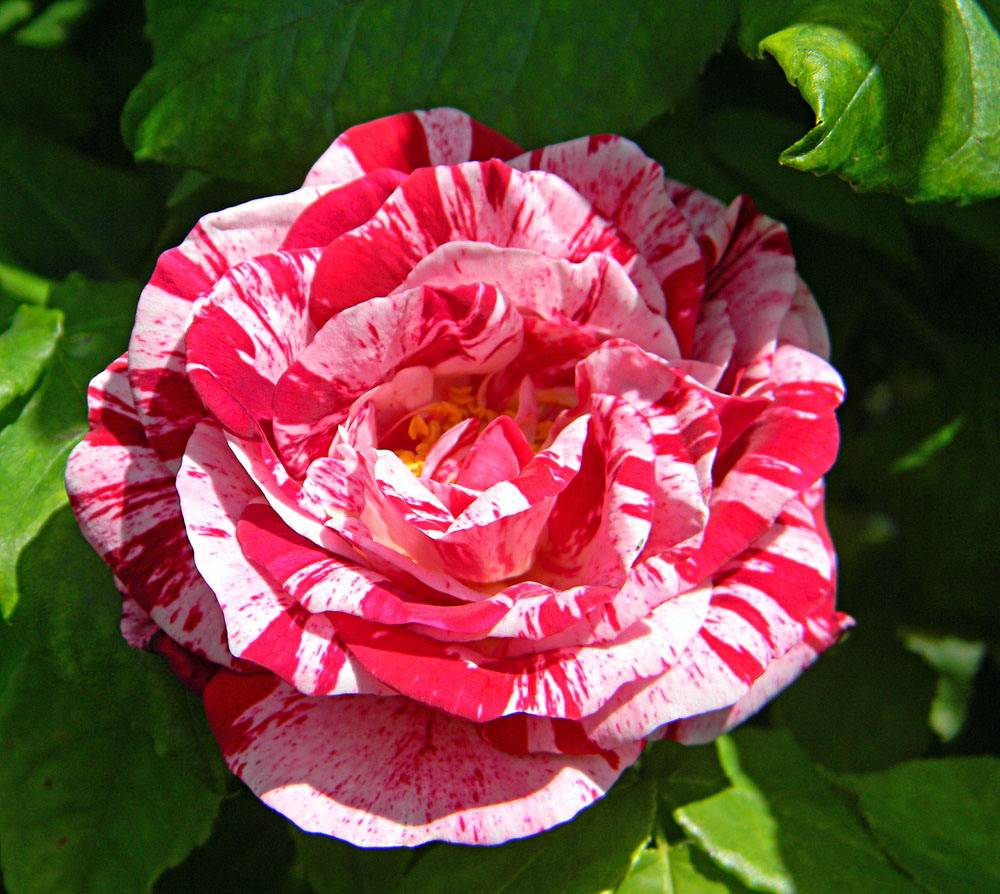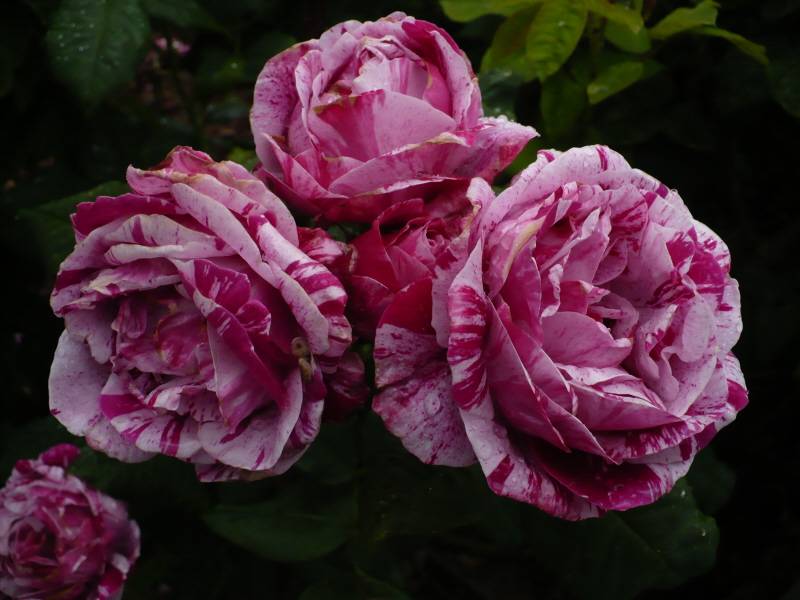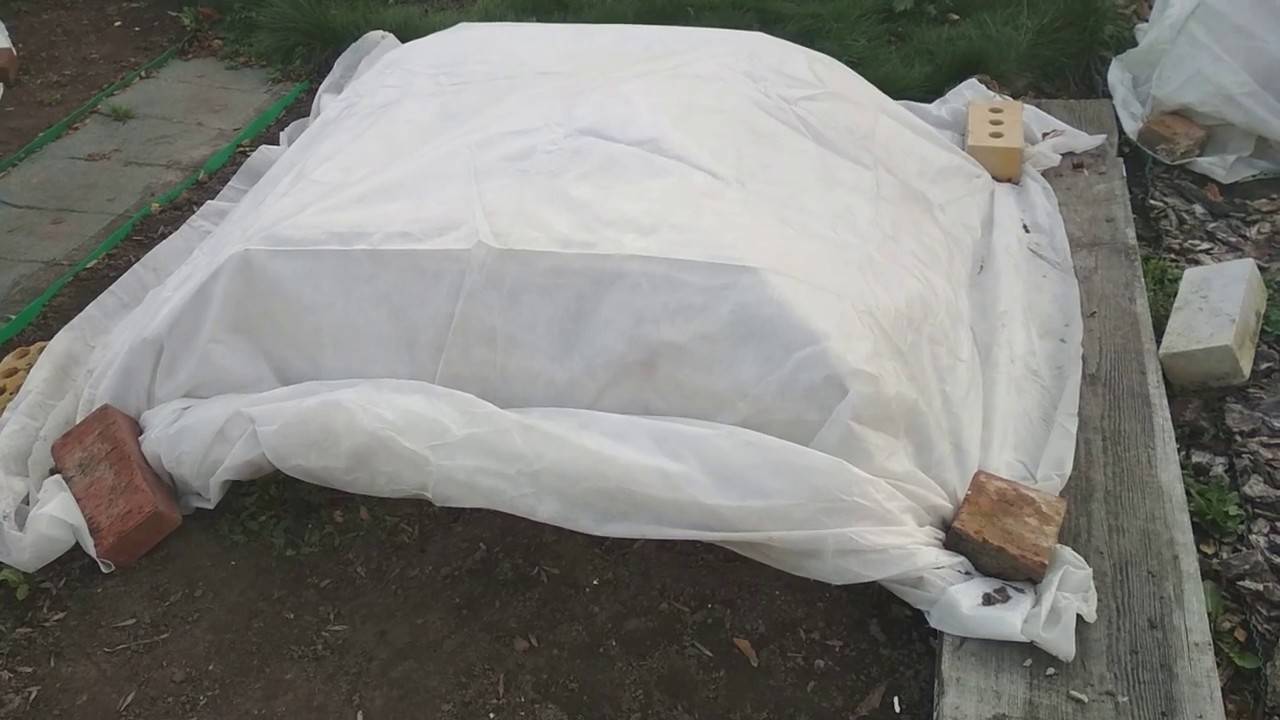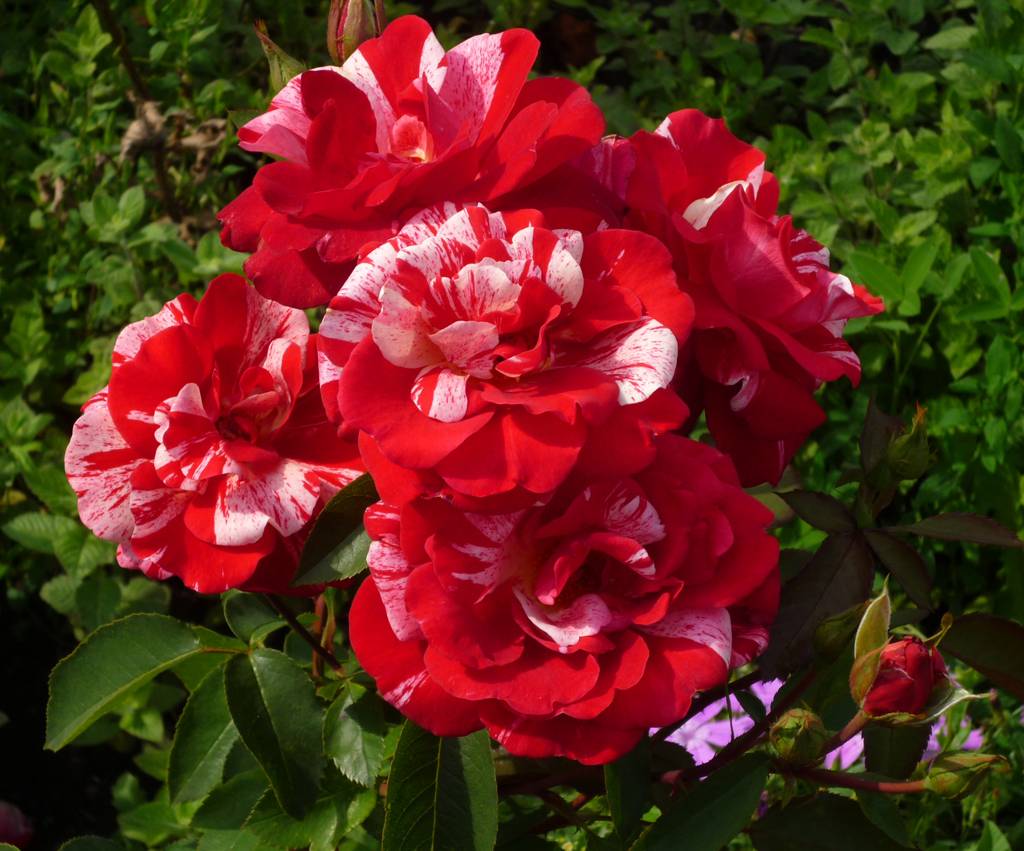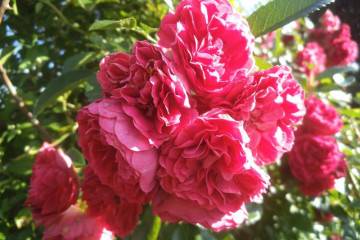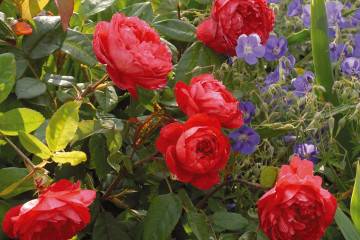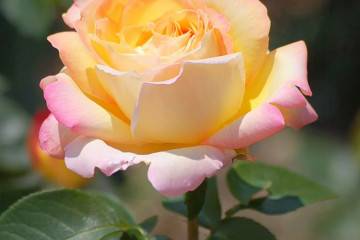Rose Ferdinand Pichard - description of the remontant variety
Content:
Among striped roses, the Ferdinand Pichard variety has been especially popular for a long time. Its representatives are distinguished by high winter hardiness, resistance to pests and diseases, as well as unpretentiousness. But still, the main feature of these colors is considered to be an attractive and unusual appearance.
History of creation and features of the variety
Rose Ferdinand Pichard belongs to the hybrids of French selection. The variety was bred in 1921 thanks to the labors of the breeder J. Tanet.
A distinctive feature of the flower is its striped color. During blooming, the plant pleases the eye with pink-red petals with pale pink longitudinal stripes.
Brief description and characteristics
Rose Ferdinand belongs to the park species. These are those plants that perfectly tolerate winter without additional shelter. The flower reaches a height of 2.5 m, and its volume can reach up to 1.2 m.
Rose leaves stand out for their large size and light green color. During the flowering period, flower stalks with a diameter of up to 7 cm are formed on the bush.On each cyst, up to 5 buds are formed. Shoots are erect, form an elongated bush.
Ferdinand Pichard is a remontant rose, so it blooms twice a season. During these periods, the flowers exude a characteristic sweet and unobtrusive aroma.
Advantages and disadvantages of the variety
Park rose Ferdinand Pichard has the following advantages:
- frost resistance;
- compactness;
- high resistance to disease;
- almost complete absence of thorns;
- the possibility of both autumn and spring planting.
Despite the huge number of advantages, the variety also has disadvantages. These include the shedding of flower petals in too hot weather and a change in the appearance of the peduncle not for the better during rains.
Use in landscape design
Rose Ferdinand Pichard will definitely be a decoration for any garden. Most often it is planted in the center or in the background. They surround the flower with plants with an approximate tone to its flowering.
It is not recommended to supplement the compositions with flowers that bloom in yellow or orange.
Growing a flower
In the Russian climate, the Ferdinand rose is grown very successfully. With proper care, it can withstand both heat and sudden drops in temperature.
Planting roses Ferdinand Pichard is done using seedlings. At the same time, they are planted in such a way that later, when the bush grows, it feels comfortable.
Seat selection
The best place to grow a flower of this variety is considered to be the most illuminated area. It should be well ventilated, but at the same time protected from drafts.
How to prepare the soil and flower for planting
The flower will feel great in loose and nutritious soil, the acidity level of which ranges from 5.5 to 5.6.
Before planting, the soil is dug up and peat, humus, mineral fertilizers and wood ash are added to it.
Preliminary preparation is also necessary for the seedling. It is soaked in warm, settled water with the addition of root or heterooxin for 5-6 hours.
Planting procedure step by step
Planting a seedling is performed in the following sequence:
- A hole is dug, the depth of which should be 50 cm.
- A complex of fertilizers, ash, sand and peat are introduced into the soil.
- 5 hours before planting, the seedling is soaked in the solution.
- The vaccination site is deepened by 5 cm.
- The seedling is watered.
- After the earth subsides, it is poured.
In the future, the plant only requires some care.
Plant care
With proper care, the rose will delight with lush and long flowering. To do this, you must follow very simple rules.
Watering rules and humidity
The frequency of watering is determined depending on the weather conditions. The average frequency is 2 to 3 times a week. In a hot period, the amount increases up to 4-7 times. It is recommended to use soft, settled water for irrigation.
Top dressing and soil quality
In the first year, if all the necessary fertilizers were introduced into the ground during planting, fertilizing is not carried out. Subsequently, they are combined with watering. They begin to feed the rose in early spring. At the first feeding, 5 liters of mullein are poured under the bush. In the future, the flower is fed once every three weeks. For this, complex mineral fertilizers are used.
Pruning and replanting
Pruning is necessary for the flower to renew and remove old, diseased and fattening shoots. They spend it in the spring. To do this, two-year-old lashes are shortened by 5 buds, and last year's from length by 30-40 cm.
Features of wintering a flower
Despite the fact that the rose Ferdinand Pichard belongs to frost-resistant varieties, snowless and very cold winters can harm the plant. To avoid damage to the bush, experts recommend spilling the flower with garden soil before the onset of frost.
It is necessary to form a slide with a height of at least 30 cm from it. When stable frosts come, the remaining shoots are covered with material that should allow air to pass through well.
Blooming rose
Rose Ferdinand Pichard blooms twice a season. This happens in early summer and autumn. During this period, flowers up to 10 cm in diameter are blooming on the plant. There are about 25 petals on one bud.
A period of activity and rest
The rose begins to bloom profusely at the beginning of summer, after which a dormant regime sets in. Reborn in the fall. With the onset of frost, the plant again enters the dormant stage.
Care during and after flowering
As soon as buds begin to form on the rose and throughout the entire flowering period, it is necessary to feed the plant with mineral fertilizers every 20 days.
What to do if it does not bloom
If the rose does not bloom, and its appearance deteriorates, then the eggs and larvae of insects may be the cause of this condition. In this case, you should immediately remove all damaged shoots and buds, and then burn them. After all the actions, the bush is treated with an insecticide.
Flower propagation
If desired, the culture can be propagated in several ways. This can be done both in spring and autumn.
Rose Ferdinand Pichard reproduces vegetatively:
- by cuttings. Carried out after the culture has faded. For this, cuttings are selected on which at least three buds are present. The cut is made at an angle of 45 °, and the shoot deepens into the ground by 10 cm. After that, the planting material is covered with a plastic bottle;
- dividing the bush. It is carried out in the spring. It is best to propagate the flower when transplanting. In this case, the separated part should be larger than the mother bush;
- layering. For this, side branches are taken and pressed against the soil in pre-prepared grooves. As soon as roots appear on the shoots, they are cut into pieces and planted in a container. Grown at home until next spring.
Pests and ways to deal with them
Park Rose Ferdinand can be susceptible to pests such as spider mites, thrips, aphids and the roseworm caterpillar. You can cope with the problem with the help of insecticides.
Rosa Ferdinand Pichard belongs to frost-resistant varieties that can adapt to any climatic conditions. With proper and uncomplicated care, the culture will delight with its lush flowering twice a year, decorating any flower bed.
